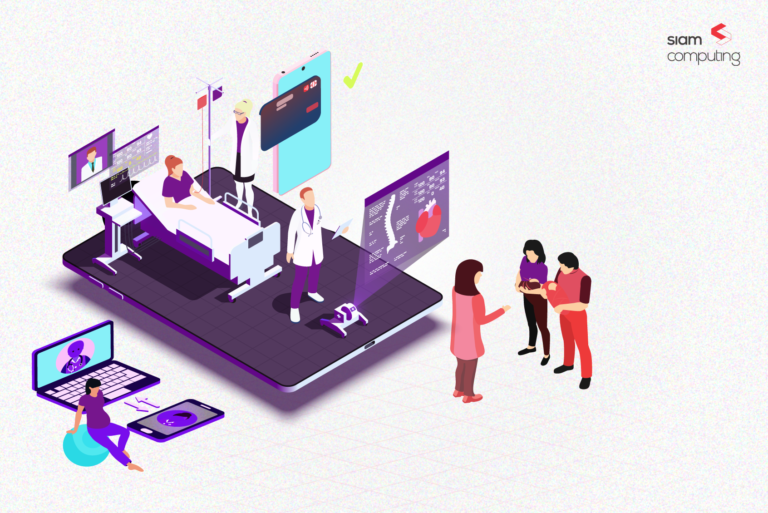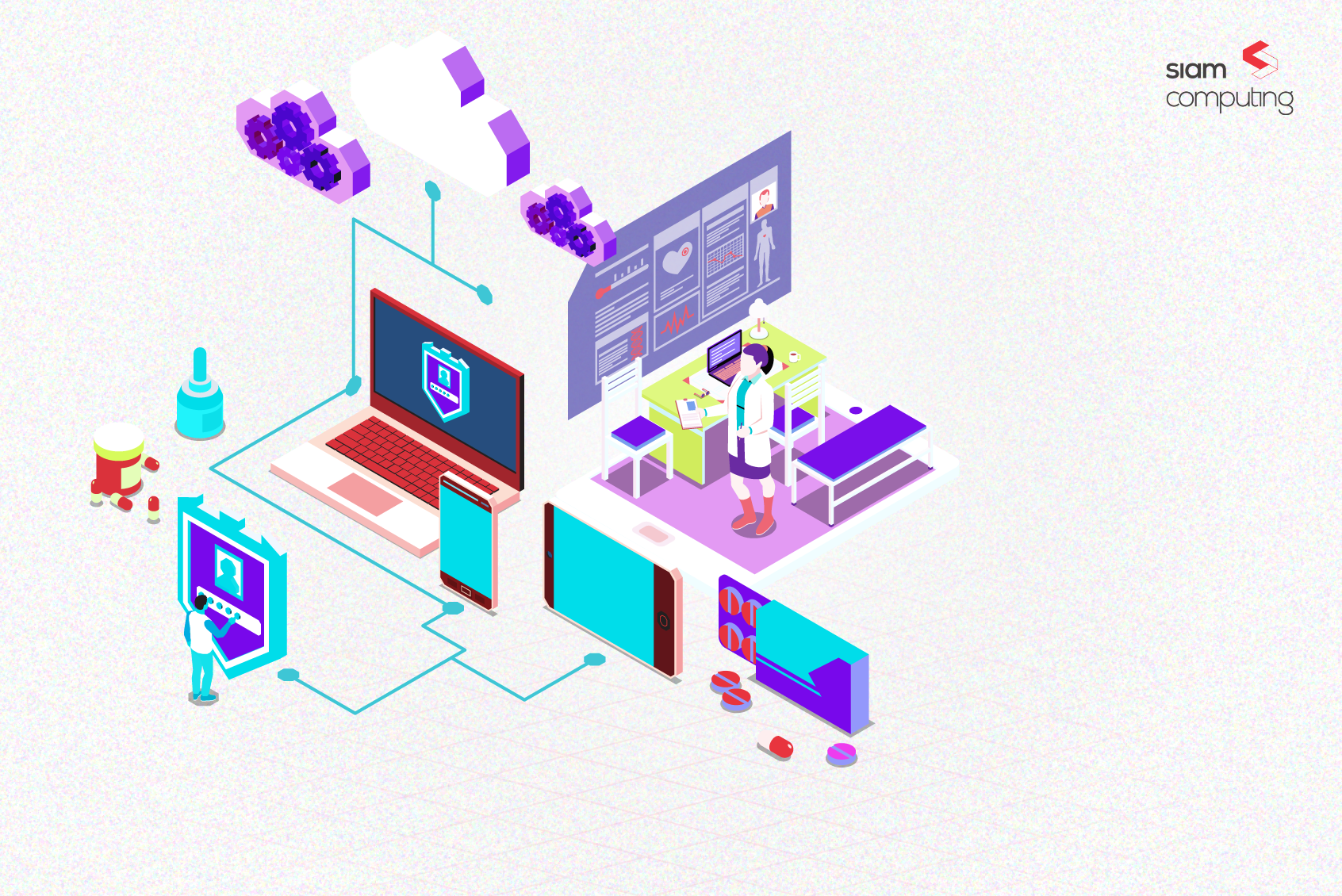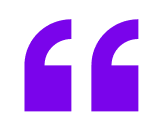The convergence of hardware and consumer-facing software is redefining innovation in the Internet of Things (IoT) landscape. Contrary to prevalent misconceptions, IoT is not solely about the device; it’s about the inseparable bond between the device and its software counterpart.
This paradigm shift urges us to adopt a holistic approach, placing both the IoT app and the device at the core of a singular, user-centric product.
Integrated Product Approach – A User-Centric Imperative
For many IoT devices, especially wearables and smart trackers, the app (often referred to as a device companion) becomes the primary touchpoint for user interaction. However, it is not a mere companion but a vital component shaping the entire IoT experience.
The traditional notion where the device and app were viewed as separate entities, with the device taking precedence, is a fragmented perspective. The users perceive the device and app as a unified product, challenging the notion that app development is an afterthought.
Consider the scenario of a fitness wearable. While the device tracks various health metrics, the app is where users analyze and interpret the data. It serves as a dashboard for setting goals, monitoring progress, and deriving actionable insights. In healthcare, remote patient monitoring relies heavily on the app to relay real-time data and data-driven insights to healthcare providers, fostering proactive interventions.
These examples illustrate that, for users, the app is not an accessory but a vital component shaping their entire IoT experience. The users of these devices don’t distinguish between the device and the app; they see it as one and the same, where both elements seamlessly integrate into their daily lives.
So, a subpar app can mar the reputation of excellent IoT hardware and vice versa.
The Role of Reviews – Influence on IoT Purchase Decisions:
In today’s competitive marketplace, negative reviews can significantly impact sales, highlighting the need to consider both elements as a unified whole during product development.
During pre-purchase research, the users extensively examine both hardware and app reviews for the IoT product you sell to seek social proof and insights into device performance and the user experience. If you think you have made a great device for your users, hence the job is done; it’s not.
This is evident when you check reviews of IoT devices on platforms like Amazon, which sells the hardware. It reveals comments not only about the physical device but also about the app’s performance. Conversely, Google and Apple app stores sometimes have reviews about the hardware device, further emphasizing the interconnected nature of physical and digital components influencing purchase decisions.
Users leave feedback based on the overall experience, not differentiating between hardware and software issues. It’s a symbiotic connection that users inherently recognize, reinforcing the importance of considering both elements as a unified whole during product development.
Shaping Positive User Perceptions by Enhancing User Experience
You don’t have to think hard to realize that it is all about shaping user perception by providing value, and the app for your IoT device plays a big role here. A well-designed app experience extends positive perceptions of the app to the device itself, enhancing the overall value of your product.
You see this so often in the world of mobile phones. There are hundreds of devices more powerful than the latest Apple phone with more sophisticated hardware. But what makes Apple the king of smartphones is the digital handshake, which complements its hardware and maximizes its potential to the fullest.
The software inherently lends a better value to the device and demands a pricing premium for Apple products, which the users are more than willing to pay, as we see from their yearly sales figures.
In the interconnected world of IoT, the interface becomes the digital handshake – a critical element in forming positive user opinions about hardware and software components.
Here are eight ways in which a well-designed app can add value to your IoT product:
1. Onboarding Excellence – Seamless Introduction to the IoT Ecosystem
The onboarding process is the user’s first touch point with the IoT ecosystem. A user-friendly onboarding process, accompanied by educational resources and tutorials within the app, establishes a positive first impression. Personalized onboarding journeys further accelerate the user’s understanding and create a sense of customization from the outset.
2. Enhanced Connectivity – Expanding Device Capabilities
The IoT app’s role in connectivity extends beyond the device itself. Interoperability with other devices and platforms, along with multi-device synchronization, enhances the product’s versatility and positions it as an integral part of the user’s digital lifestyle.
3. Engagement and Gamification – Fostering User Motivation
Engagement features, such as gamification and social integration, make the IoT experience more enjoyable. Gamified elements within the app, coupled with social features, encourage consistent user interaction, reinforcing the overall value proposition of your IoT product.
4. Energy Efficiency and Resource Optimization
Your IoT may be packed with a myriad of the latest sensors. But sensors drain the battery. Prioritizing energy efficiency and resource optimization within the app contributes to a positive user experience and ensures the device stays on longer for your user. Power management tools and resource monitoring features, accompanied by proactive alerts, keep users informed and in control of the device performance and battery, further enhancing the product’s value.
5. Predictive Analytics – Anticipating User Needs
The integration of predictive analytics within the app anticipates user needs, offering personalized suggestions and automating routine tasks. Context-aware automation adds sophistication, making the IoT product more adaptive to the user’s lifestyle.
6. Accessibility and Inclusivity – Serving Diverse User Demographics
Prioritizing accessibility features and language localization support ensures the IoT product caters to a diverse user base. An app that is inclusive and considerate enhances the overall reach and user-friendliness of the product. In short, you can sell it to more people by adapting it to their localized needs.
7. Real-Time Collaboration and Remote Control
Real-time collaboration features within the app, coupled with secure remote control and monitoring, simplify the user experience. Whether managing smart home devices or overseeing connected appliances, these features contribute to the overall utility and appeal of the IoT product.
8. Proactive Customer Support and Feedback Integration
Embedding customer support features within the app and actively seeking user feedback create a continuous feedback loop for product improvement. An app that addresses user concerns promptly enhances user satisfaction and contributes to the overall positive perception of your IoT product.
Incorporating these diverse elements into the design and functionality of your IoT app ensures that it remains at the forefront of innovation and user satisfaction.
Your IoT App is Your Competitive Moat in a Crowded Marketplace
If you really think about it, in the interconnected world of IoT, where everyone taps into the same pool of sensors, processors, and hardware from common suppliers, it’s the finesse with which you craft the software that becomes the true differentiator.
The convergence of hardware might make the physical components somewhat ubiquitous, but it’s the intangible, the software – crafted especially for your app and your targetted customer base – that becomes the cornerstone of a remarkable product.
Your IoT app shields your brand by providing a seamless interface, responsive support, and updates, preserving integrity against dissatisfaction. The app by itself is a unique feature of your IoT device, setting your product apart. Continuous innovation ensures it remains a defining advantage in a competitive market.
The app helps your device stay relevant in the market for longer by helping it adapt to emerging trends, meet evolving user needs, and secure your position in a changing tech landscape.
Lastly, and certainly not a point to be taken lightly, the app is your gateway to revenue and expansion. In-app purchases, subscriptions, and third-party integrations transform your IoT product into a versatile revenue-generation platform.
In the IoT landscape, your app is more than a companion to your device. It is the linchpin ensuring cohesion, resilience, and strategic relevance. Invest in its innovation, user experience, and security to fortify your brand’s position in the competitive digital realm.
Let’s Pioneer the Software-First Era in IoT
Dispelling the misconception that app development for IoT is secondary is crucial. We hope this write-up has a part to play in this mission. Looking ahead, the integration of AI and machine learning stands out as a trend that transforms IoT apps into intelligent assistants. Edge computing is already reshaping data processing dynamics, voice-activated interfaces are adding more intuitiveness, and collaborative ecosystems are redefining the future of IoT.
Aligning product strategies with the interconnected nature of IoT ecosystems, prioritizing user-centric design, and leveraging emerging technologies will define the next phase of IoT innovation. In this transformative journey, the app remains pivotal – a guiding force in crafting experiences that seamlessly blend the physical and digital realms.
At Siam Computing, we specialize in crafting innovative IoT solutions that go beyond the ordinary. Our team of expert product strategists understands your IoT app’s pivotal role in shaping user experiences, brand reputation, and market success.
If you’re ready to elevate your IoT product with a seamlessly integrated app, our specialists are here to guide you. Let’s collaborate to create a unique, user-centric IoT solution that stands out in the crowded marketplace. Schedule a consultation with our experts today, and let’s pioneer the software-first era in IoT together. Your transformative IoT journey begins here at Siam Computing.







